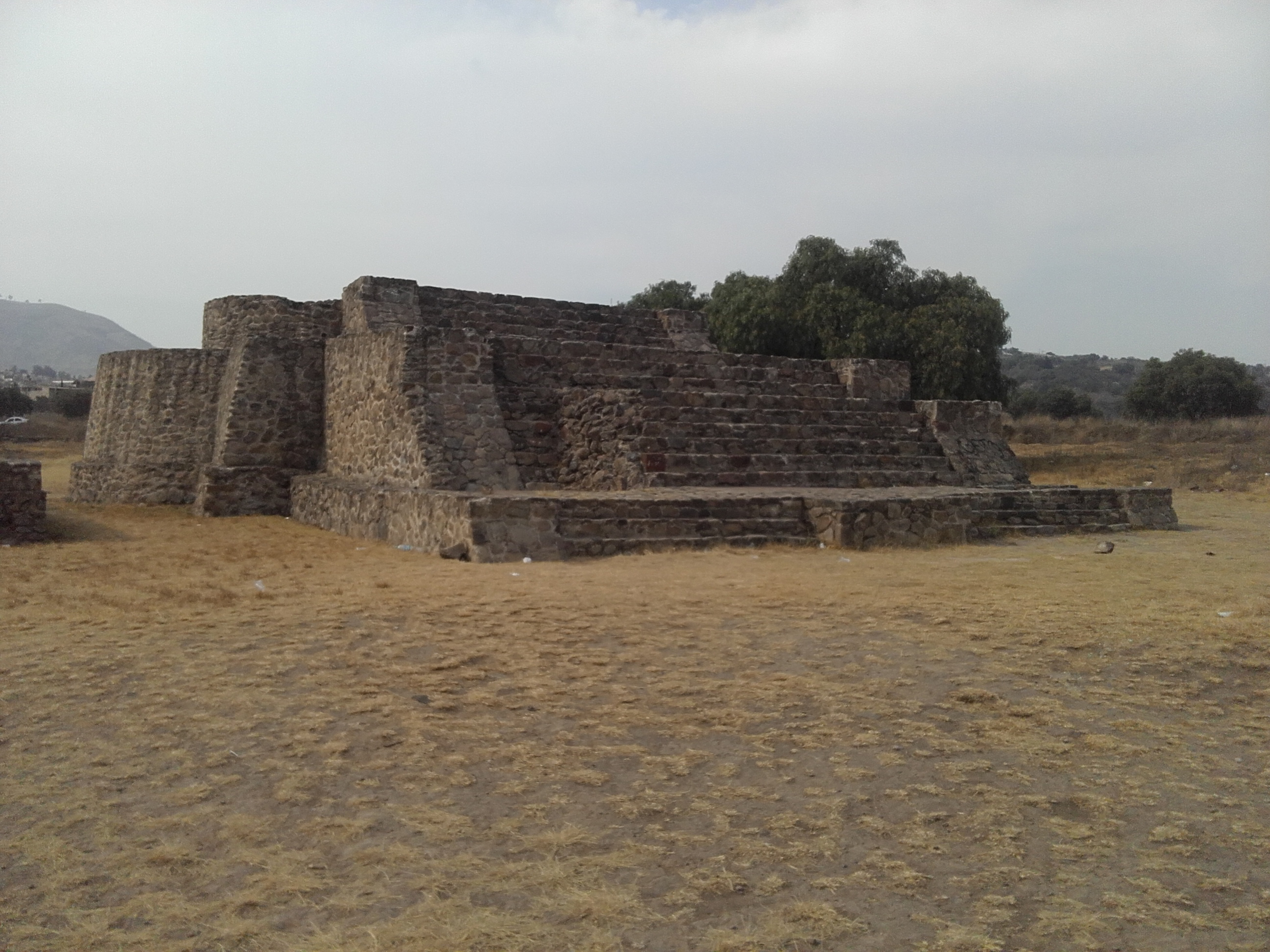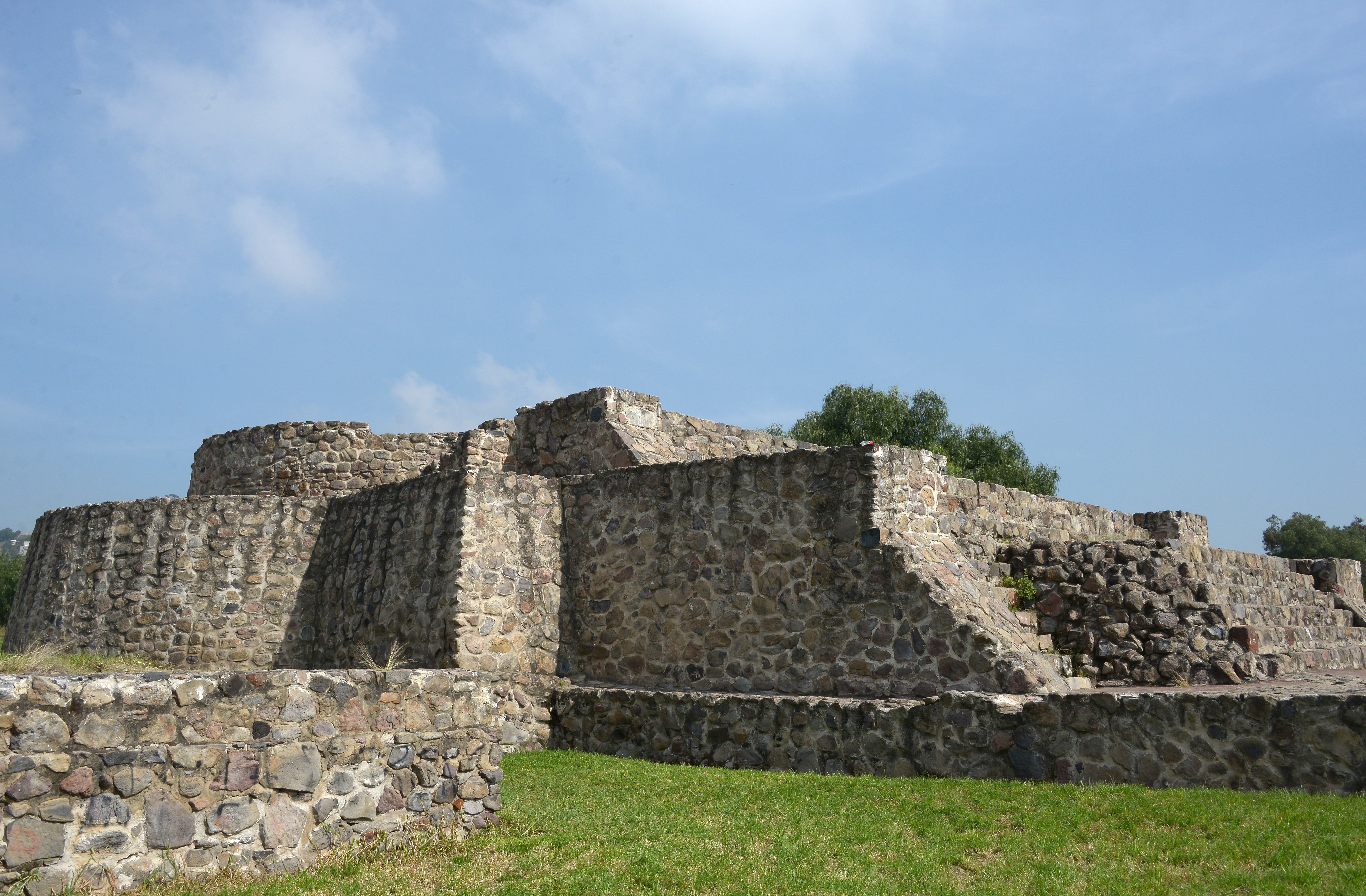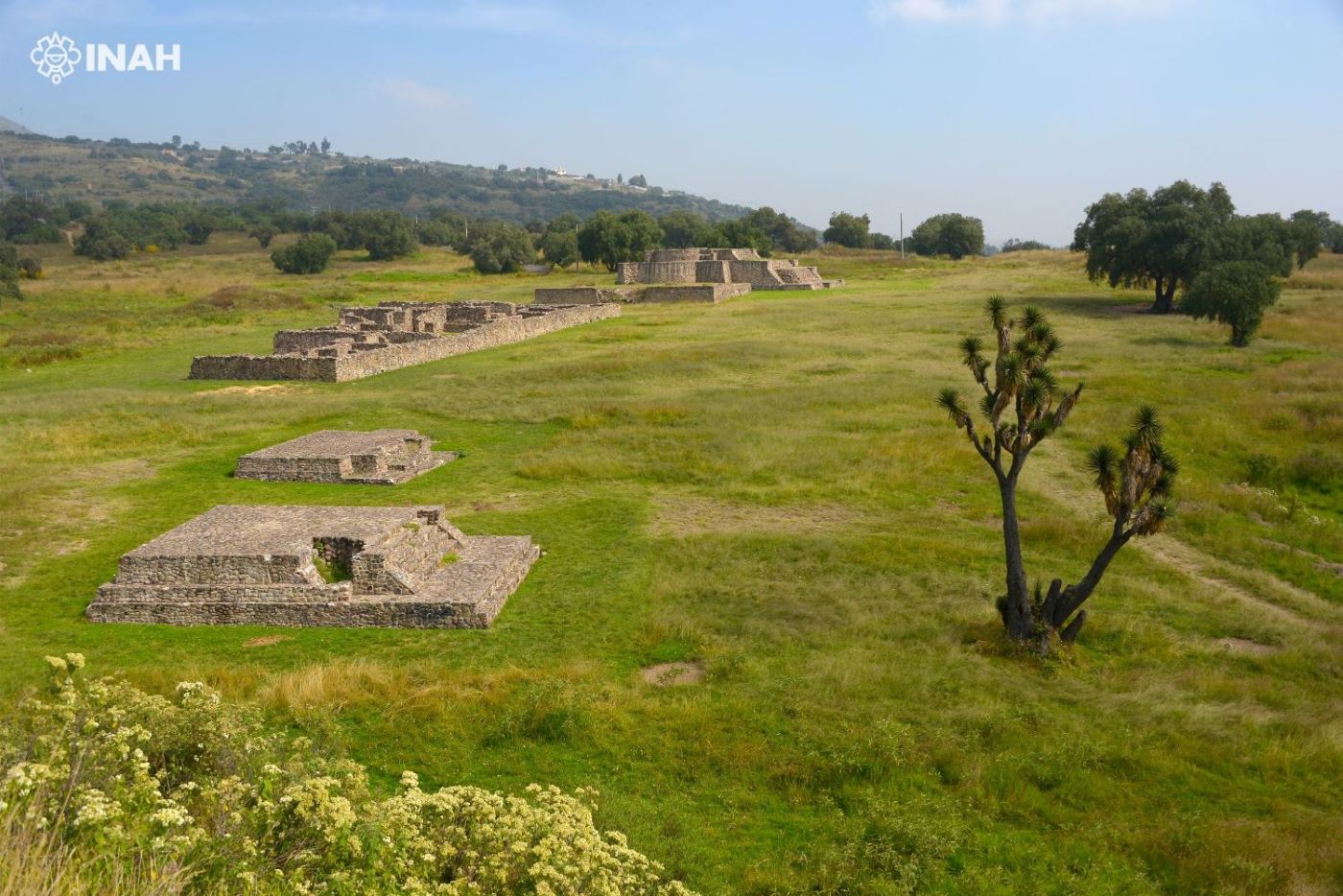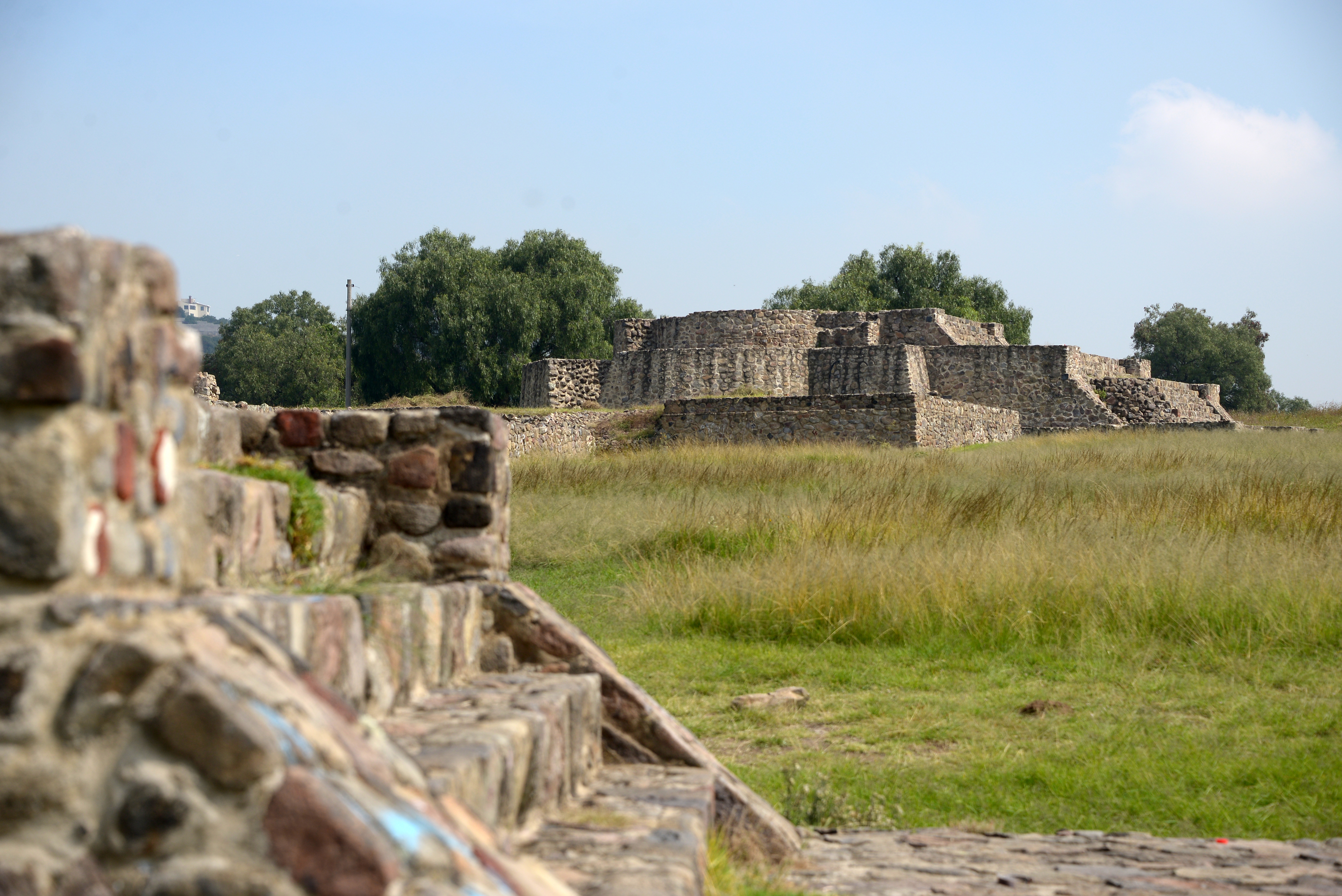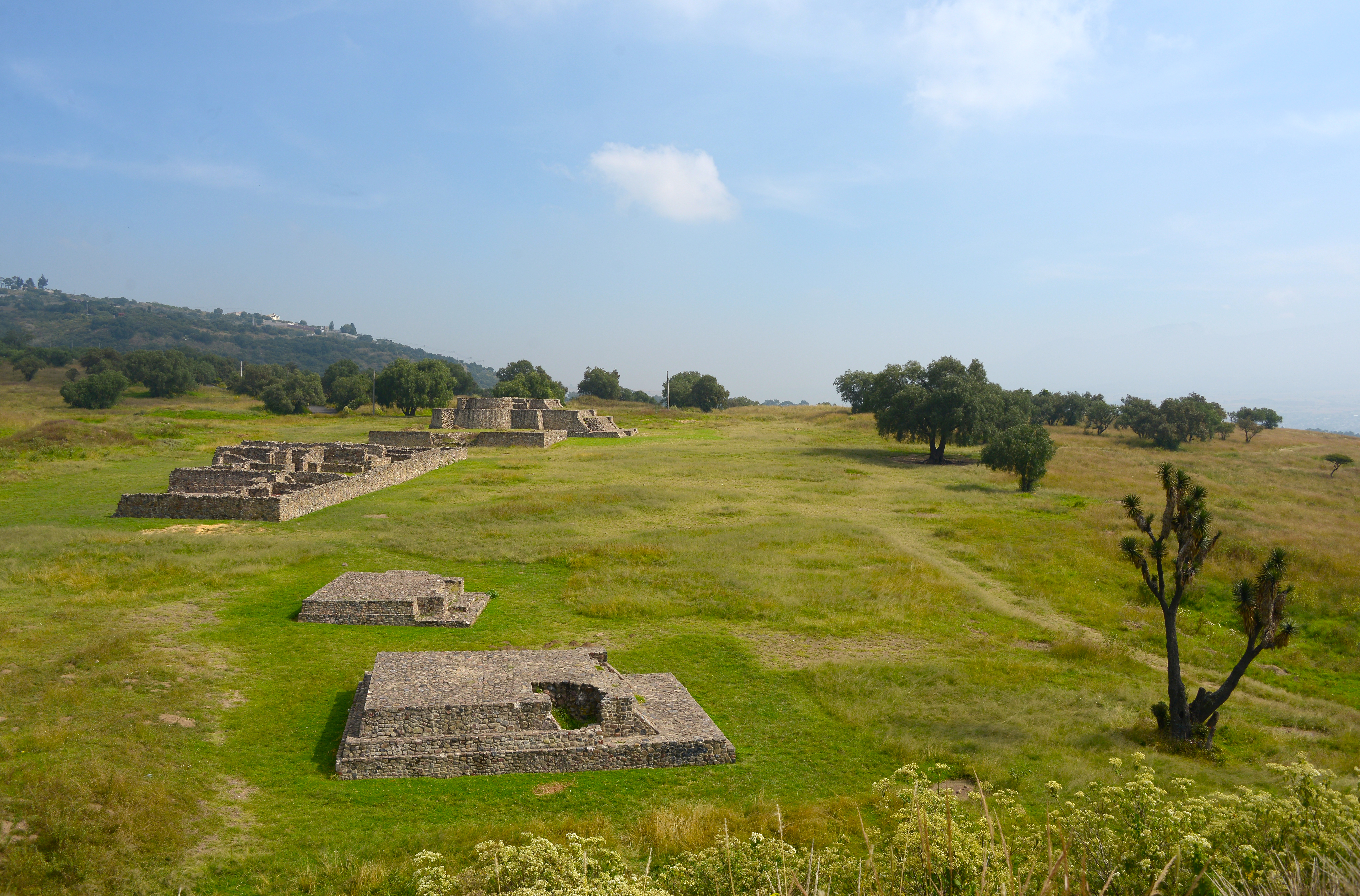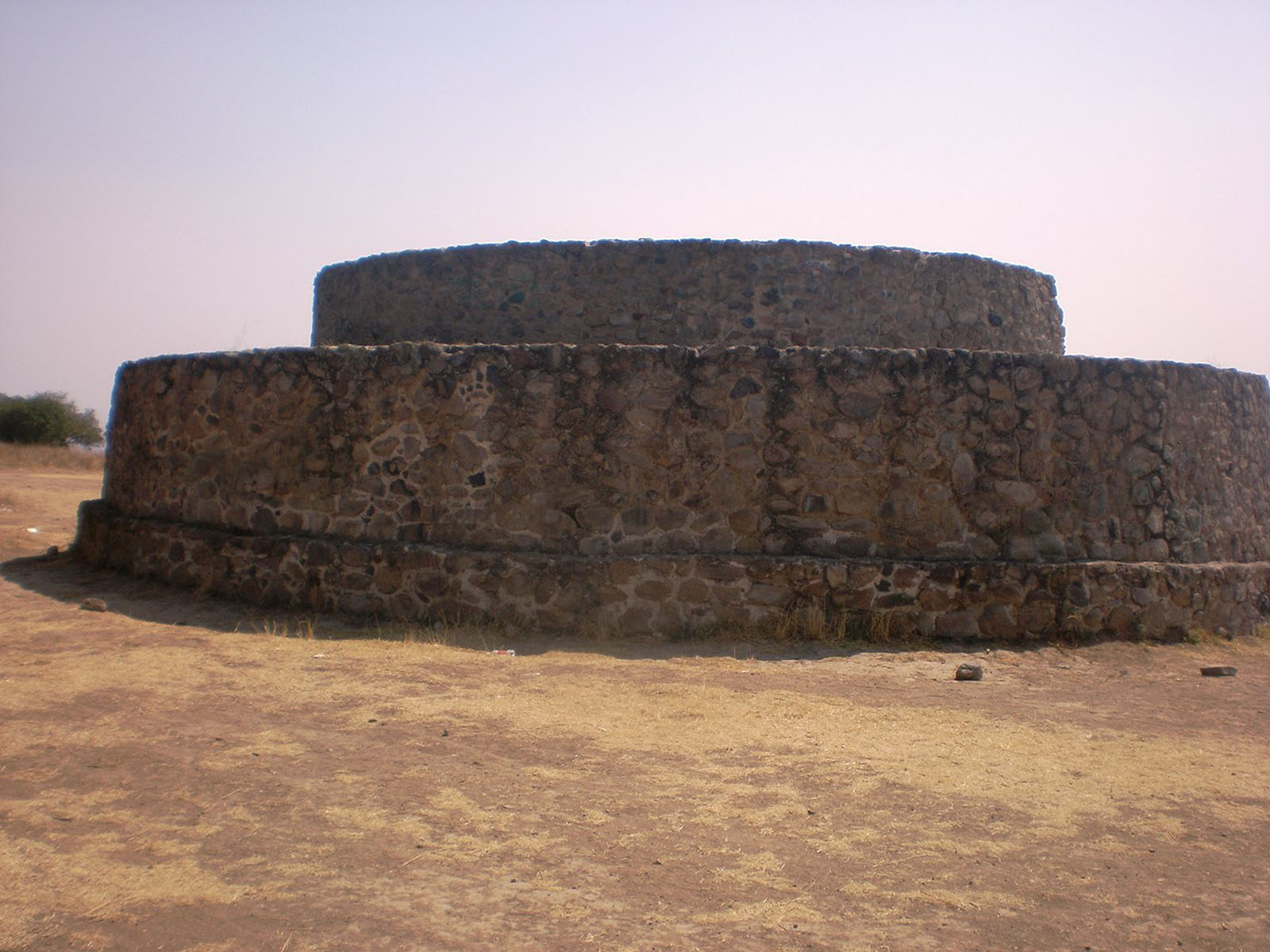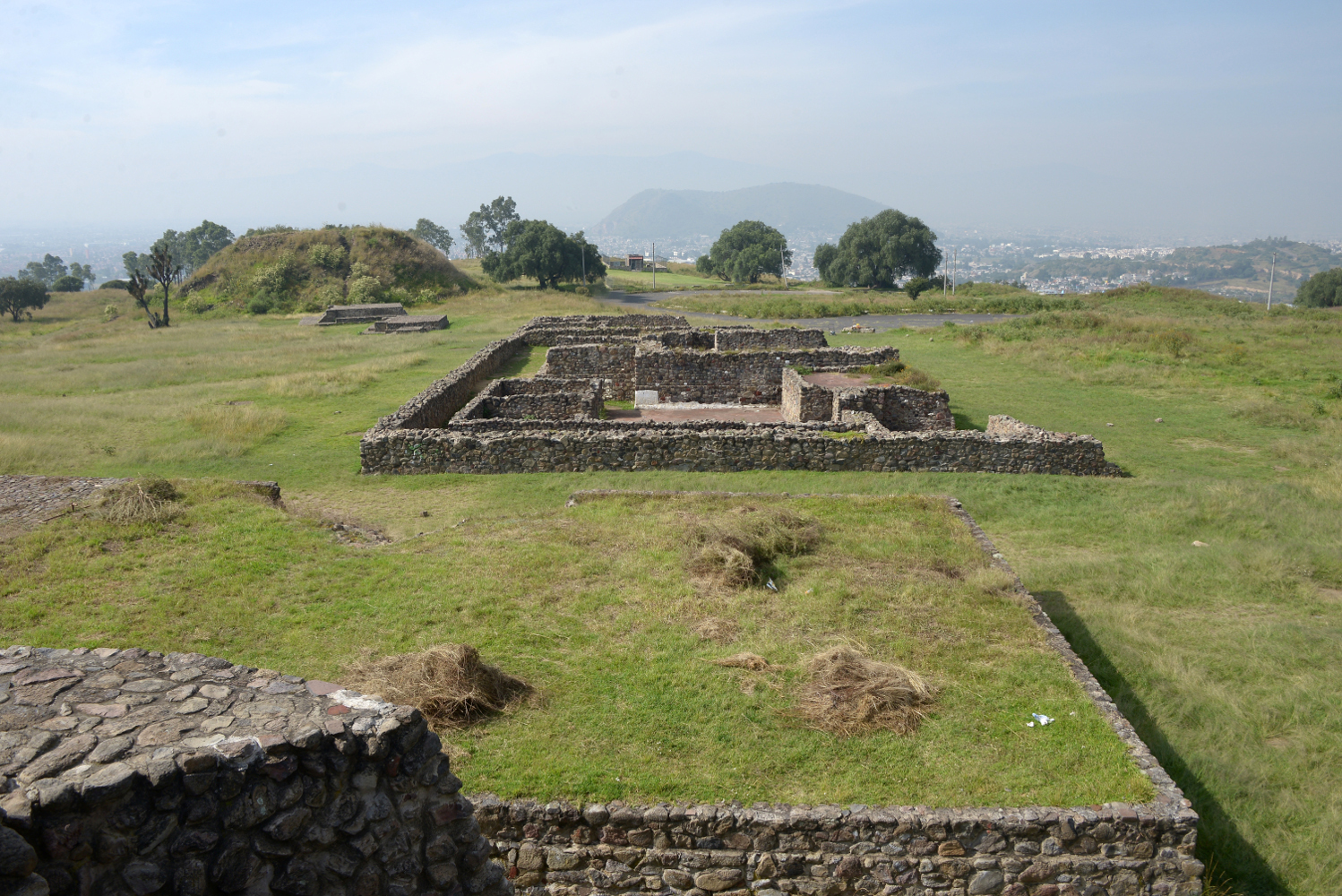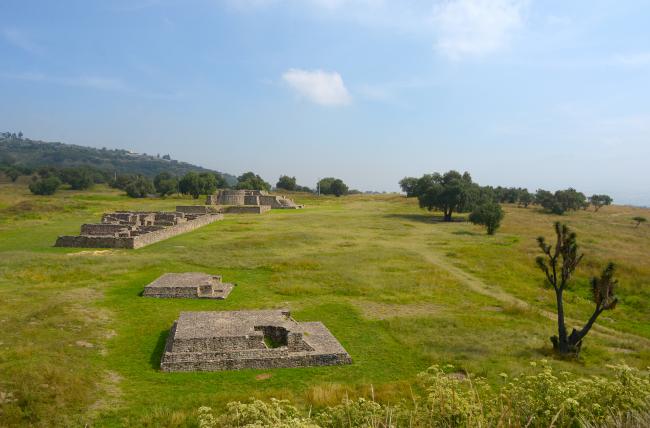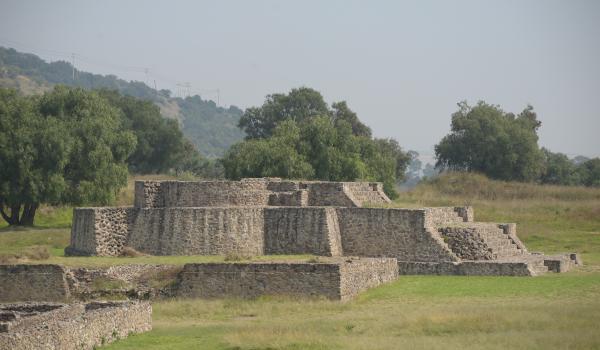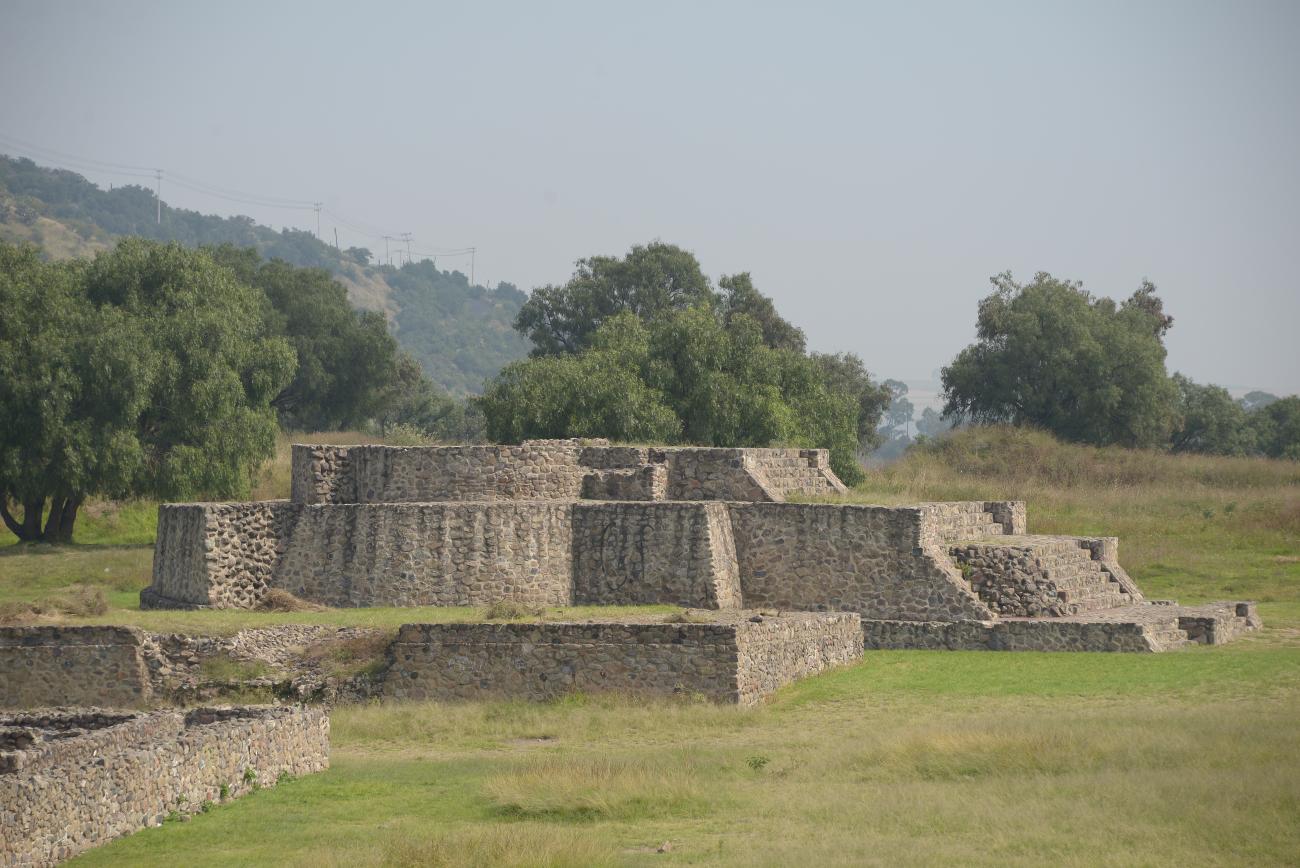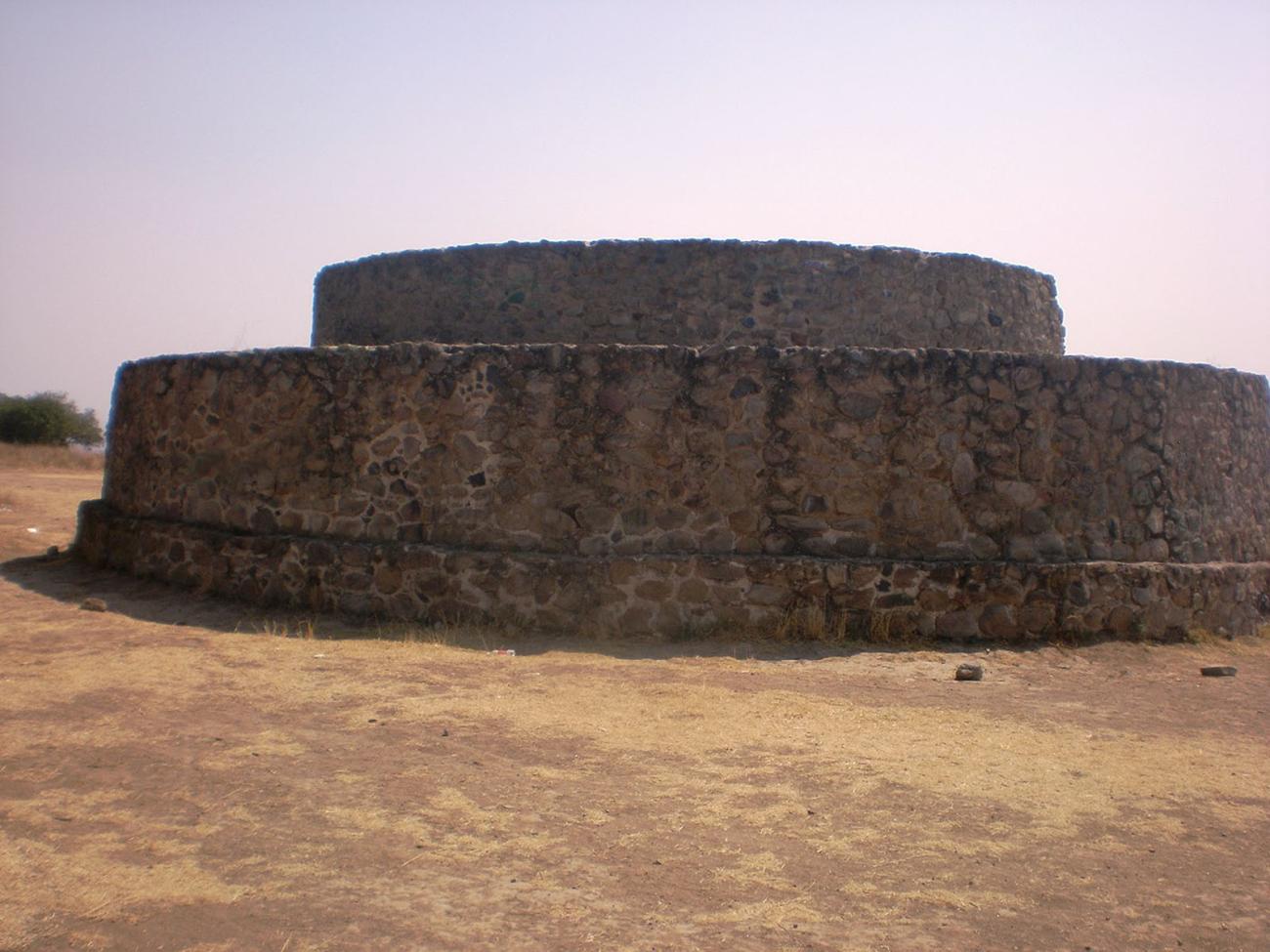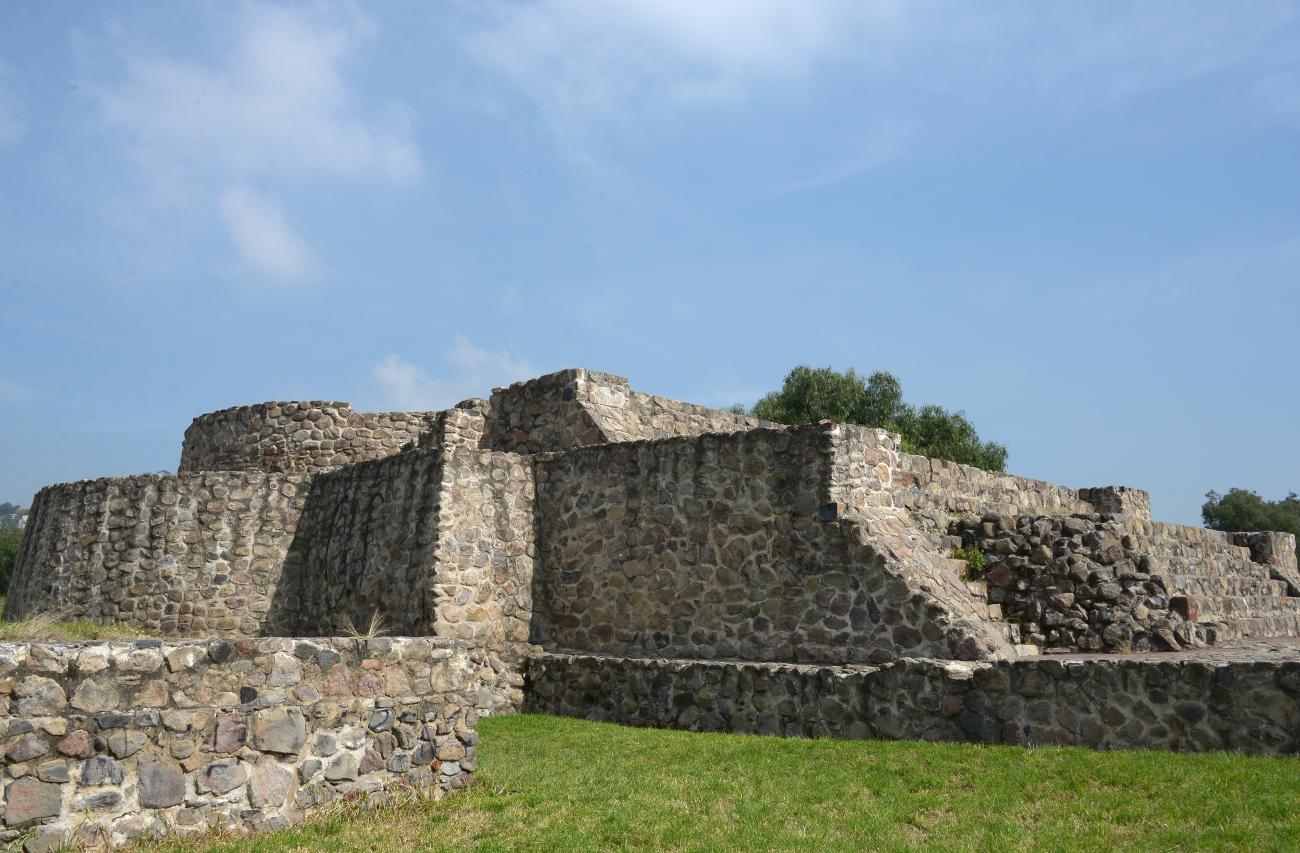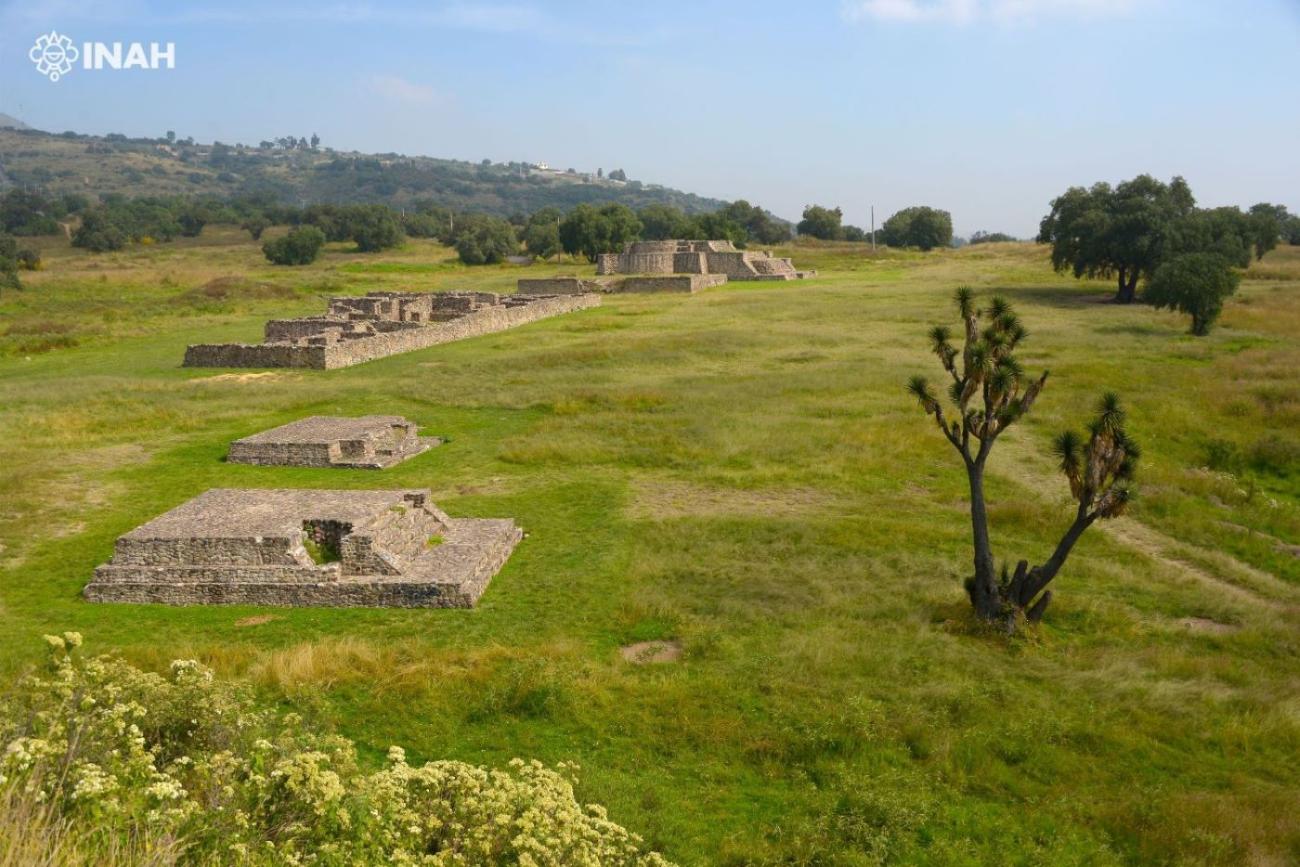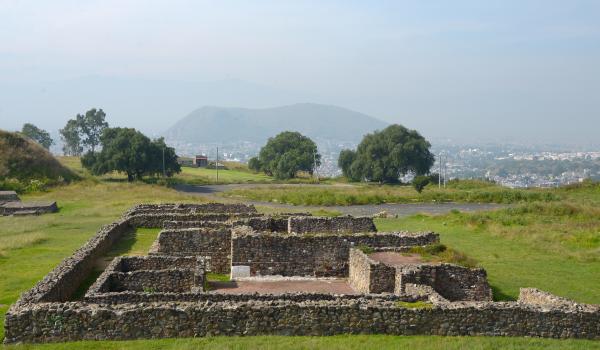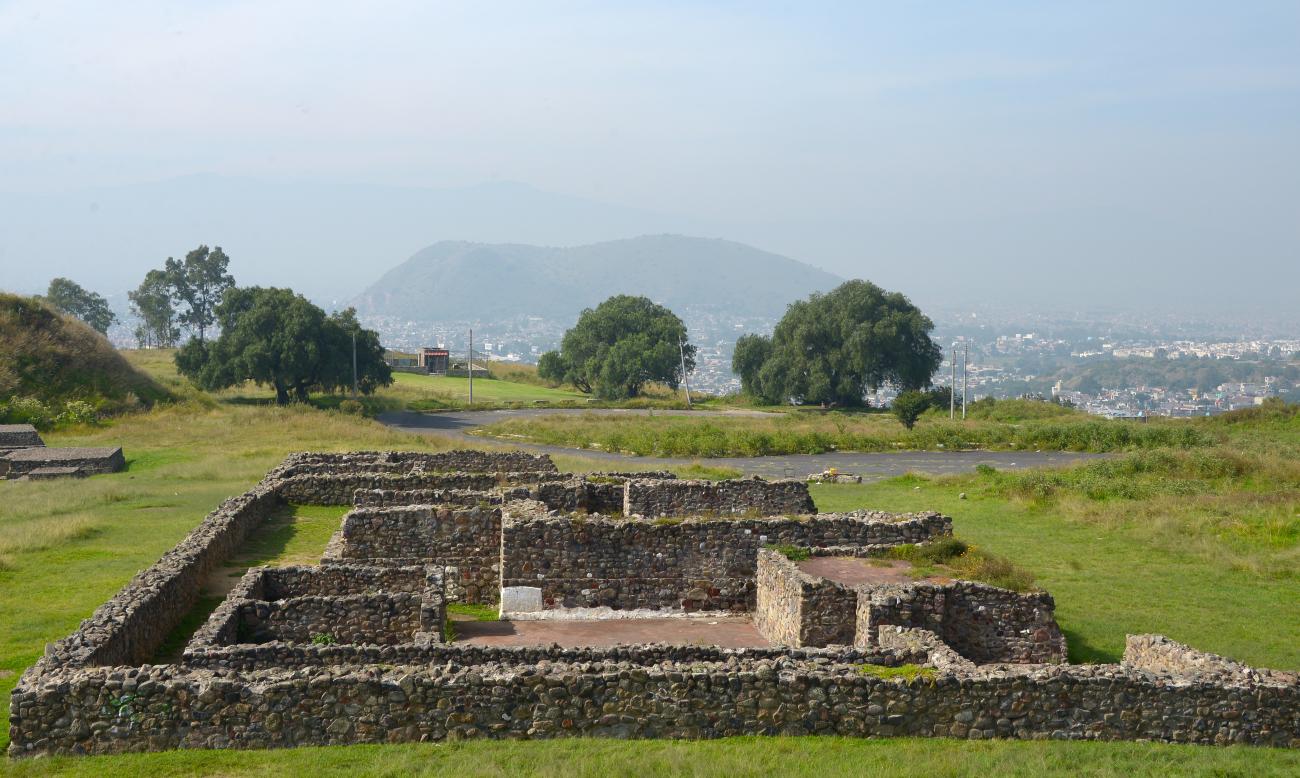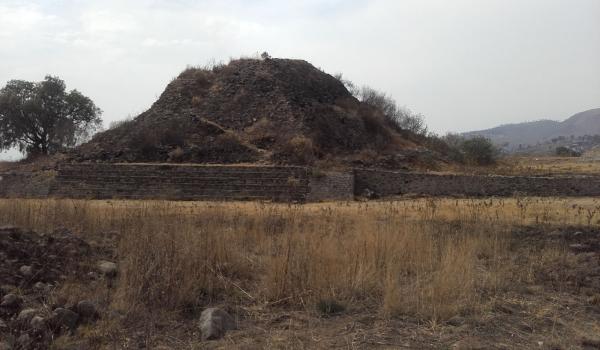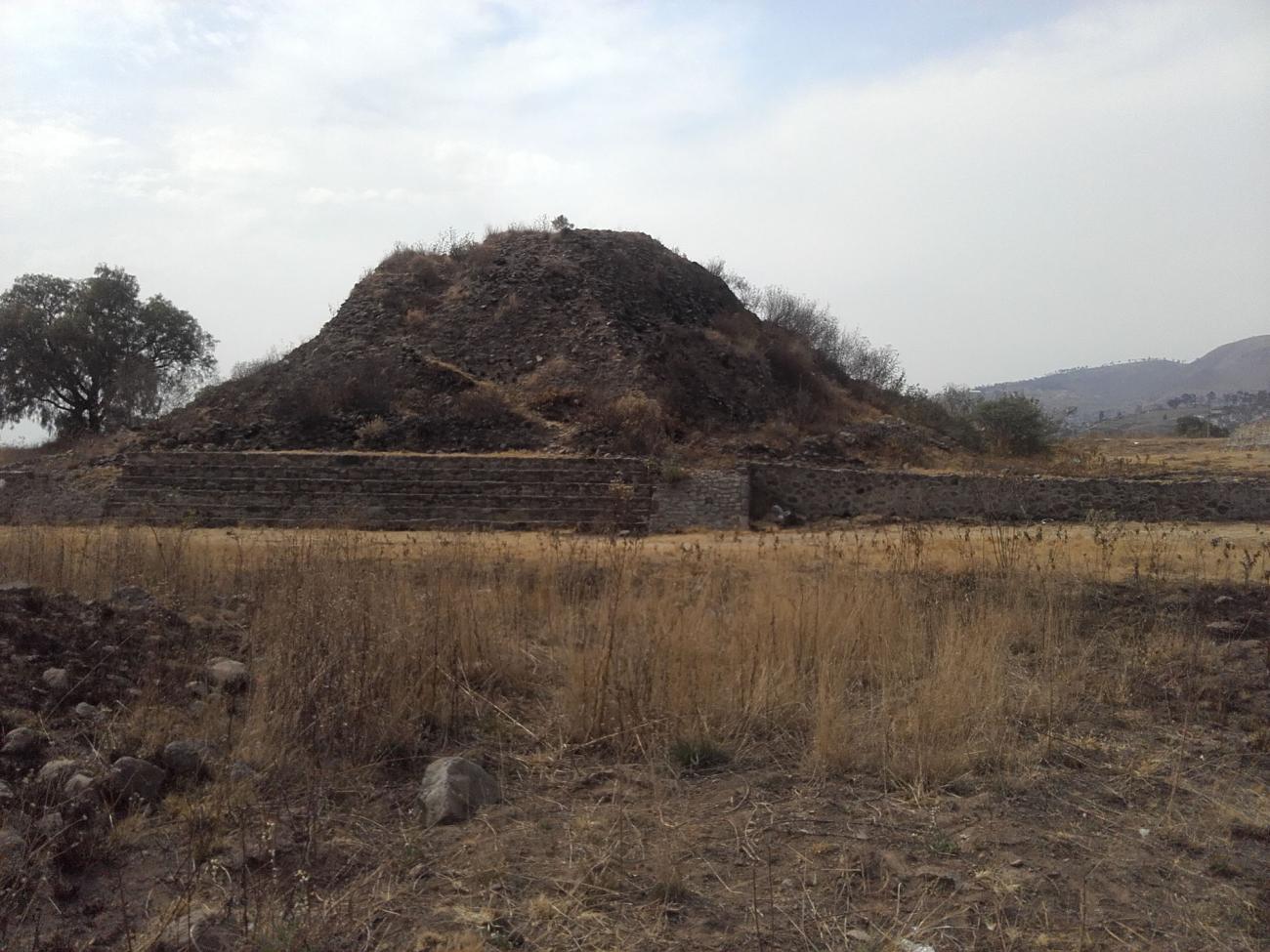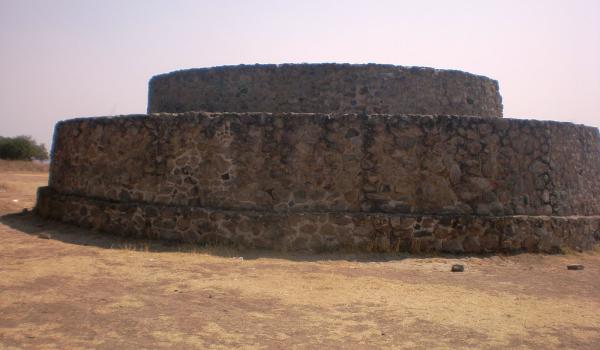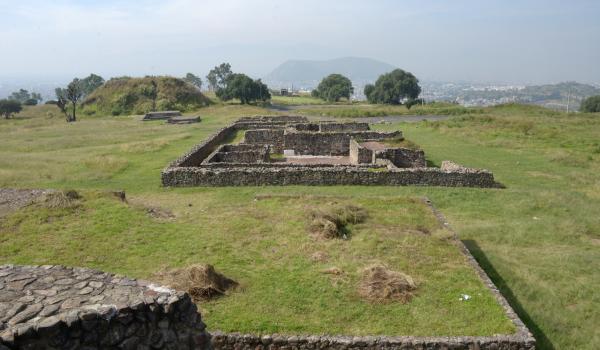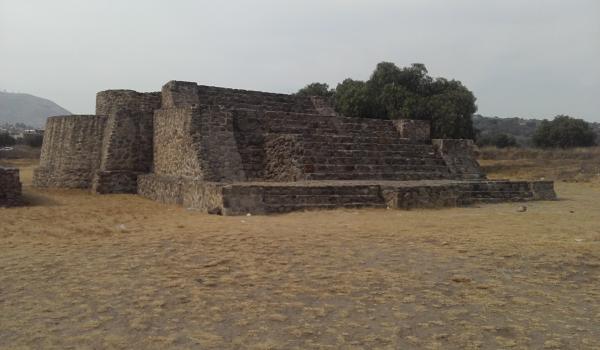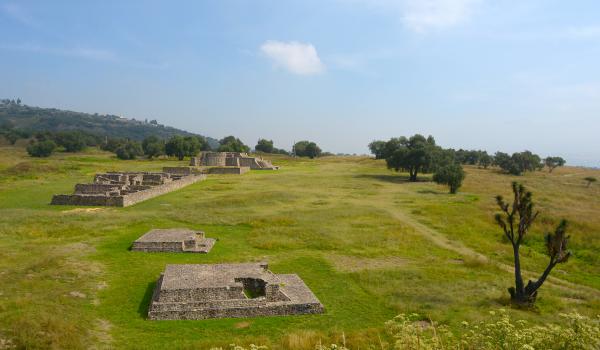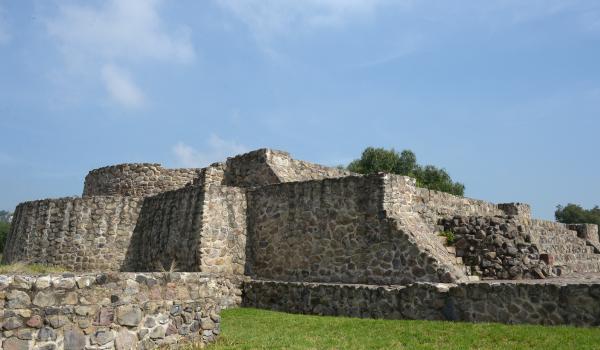The establishment of this archeological site, built on the plateau of the Cerro de Moctezuma, corresponds to the Azteca I phase. It was continuously occupied until the arrival of the Spanish, meaning it was active throughout the Postclassic period (900-1521). It takes its name from the Hacienda Acozac, erected in the place known as Ixtapaluca Viejo, which in the pre-Hispanic era was called Tlazallan-Tlallanoztoc and, according to the Xolotl Codex, it was the seat of the grandson of Xolotl Techotlallatzin.
The area was part of the Acolhuacan, whose seat was located in Texcoco. Some documents relate that Tezozomoc, Lord of Azcapotzalco, in an attempt to conquer Acolhuacan, attacked Ixtapallocan by surprise, but it was defended by its leaders and the attack was repelled. Ixtlilxochitl Ome Tochtli, tlatoani of the Acolhua empire, established garrisons in Acozac and the Lord of Ixtapalocan became chief of the border. The Lordship of Chalca fought fiercely for the dominion of Ixtapalocan until, during the government of Nezahualcoyotl, the city became part of Acolhuacan.
The first archeological exploration was carried out in 1962. Some years later, in 1973, the buildings that can currently be visited were explored and consolidated: the Circular Temple and the Palace. The Circular Temple is dedicated to the cult of Ehecatl, god of the wind, and presents three stages of construction, while the Palace is an enclosure composed of rooms and courtyards where some red stucco plasterwork is preserved. To one side of the Palace four altars were found with a square floor plan and stepped volumes, as well as a building of greater dimensions, the Basamento Mayor, Templo Mayor or Great Platform, in front of which there is a square with an altar in the center that is still to be explored.
During the archeological work, pottery from the Azteca I and Azteca II phases was discovered, which coincides with the reign of Techotlalltzin, and the last period of occupation corresponds to the Aztec III phase (1430-1521).


